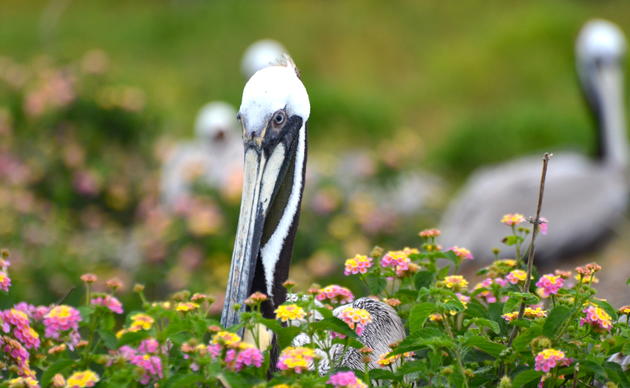Roseate Spoonbill
The Roseate Spoonbill is a striking bird. With its deep pink plumage and long, spatulate bill, it is a unique resident of the Texas coast. Spoonbills forage by wading in shallow water, swinging their bills from side to side as they wade. The spoon-shaped bill allows them to easily sift through mud, capturing small fish, crustaceans, and other aquatic animals that are often ignored by larger waders.
Decimated by the millenary trade around the turn of the century, by 1895 the Roseate Spoonbill likely no longer bred in Texas. By the 1920s, Roseate Spoonbills had partially recovered. In 1923, the National Audubon Society began leasing the Second Chain of Islands and the Vingt et un Islands of the Texas coast, which at the time represented the largest and second largest (respectively) Spoonbill colonies in the United States. By the late 1970s there were 2,500 pairs of spoonbills nesting on the Texas coast.
Throughout their range, Roseate Spoonbills breed in a variety of marine, brackish and freshwater habitats: bays, inlets, estuaries, mangroves, marshes, beaches, forested swamps, rivers, lakes and wet prairies. They prefer islands or islets for nesting and will utilize trees and shrubs (2-6 m tall) for nesting and roosting. Rookery locations for this species need adequate room for nests and roosting, adjacent shallow water for fledged chicks to forage and find abundant prey and must be free from human disturbance and predators. Shallow water (less than 12 cm) brackish areas are preferred for feeding but Spoonbills will use marine and freshwater areas as well. Adults have been documented as flying 12.4-65 km from nest site to feeding grounds, but in a Texas study breeding adults traveled 1-1.5 km from the colony site to feed. Degradation and destruction of coastal foraging habitat are the most important conservation problems for this species in the United States.
For more information on Roseate Spoonbills, including identification information, visit their page on the Cornell Lab of Ornithology.
Text References
- Anderson 2000.
- Dumas 2000.
- Lewis, J. C. 1983. Habitat suitability index models: roseate spoonbill. University of Georgia, Atens, GA.
How you can help, right now
Join Audubon Texas Today
Becoming a member supports our local work protecting birds and the places they need.
Consider a Legacy Gift for Texas
Planned gifts and bequests allow you to provide a lasting form of support to Audubon Texas.
Subscribe to Our Newsletter
Subscribe to our newsletter for updates about Audubon Texas's conservation work, and news about our activities and local events.




